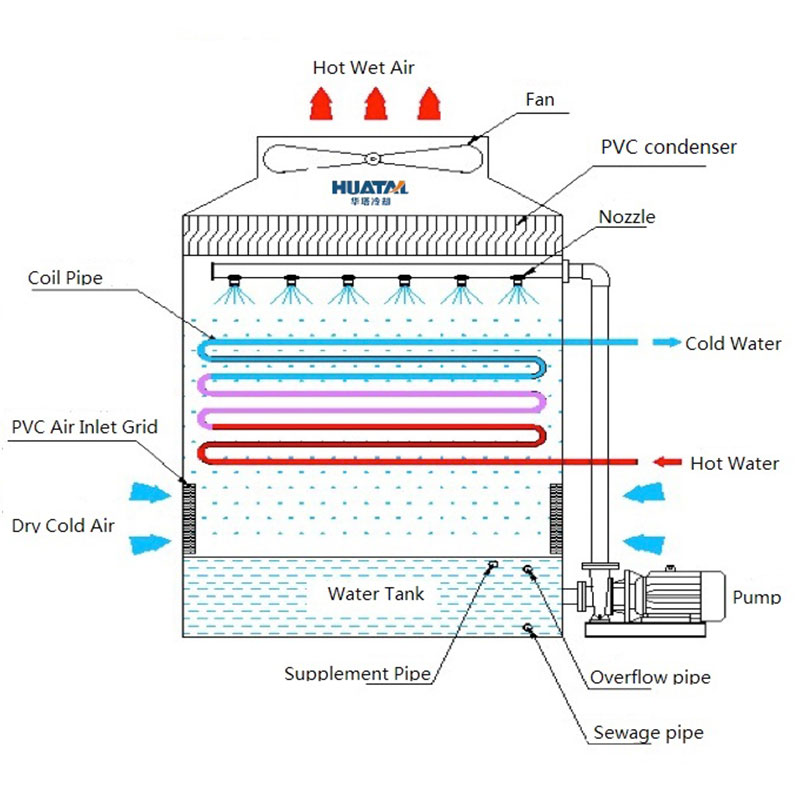



Flue gas separates droplets away under the action of inertia force and gravity when passing bending channel of the vane pack mist eliminator. Then desulfurized flue gas flows through mist eliminator in a certain speed and changes running direction quickly and continuously. Droplets in the flue gas are captured while crashing into mist eliminator blades under the action of centrifugal force and inertial force. They gather and form into a stream and then drop back to the slurry pool under gravity. Finally gas and liquid are separated, and the flue gas which flows through the demister is discharged after meeting the standard of mist removal. Demisting efficiency of drift eliminator increases as the air velocity gets higher.
The high flow velocity and the large inertia force acting on the droplets are conducive to the separation of gas and liquid. However, flow velocity improvement will increase system resistance and energy consumption. The increase of flow velocity has certain limits, because over-high flow velocity will bring water. It may reduce demisting efficiency of the drift eliminator. The highest flow velocity of flue gas with no secondary water when passing through the cross-section of eliminator is always defined as the critical flow velocity. The velocity has relation with the structure of mist eliminator, the water load of system, flow direction, arrangement form of drift eliminator and other factors. Flow rate is always selected between 3.5~ 5.5 m/s.
Copyright © 2019 Jiangsu Huatal Cooling Technology Co., Ltd. | All Rights Reserved
Hello, please leave your name and email here before chat online so that we won't miss your message and contact you smoothly.